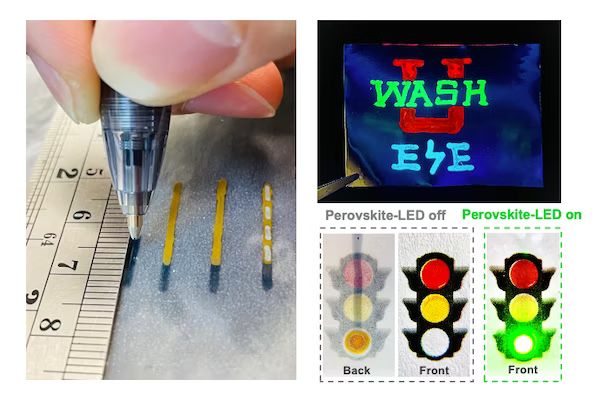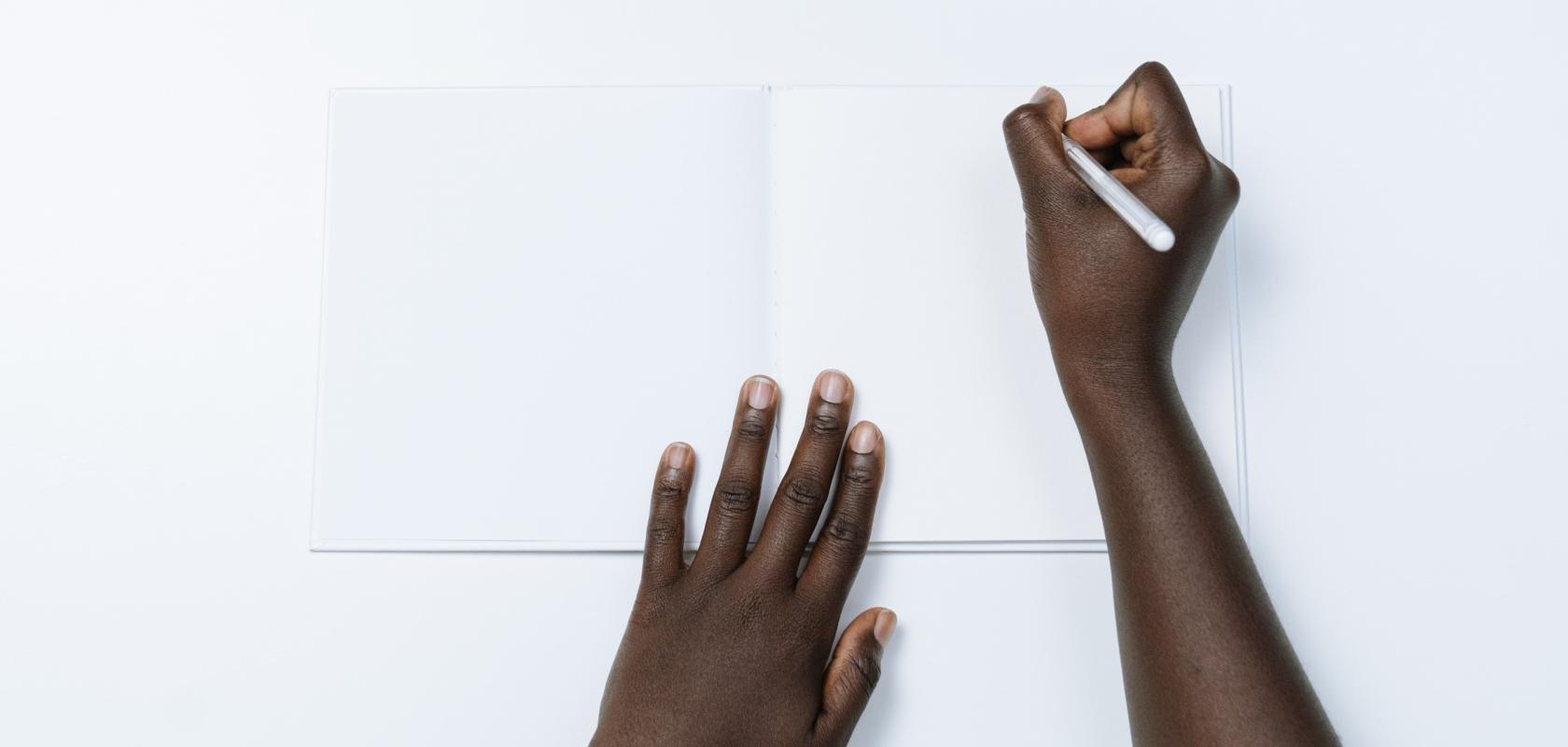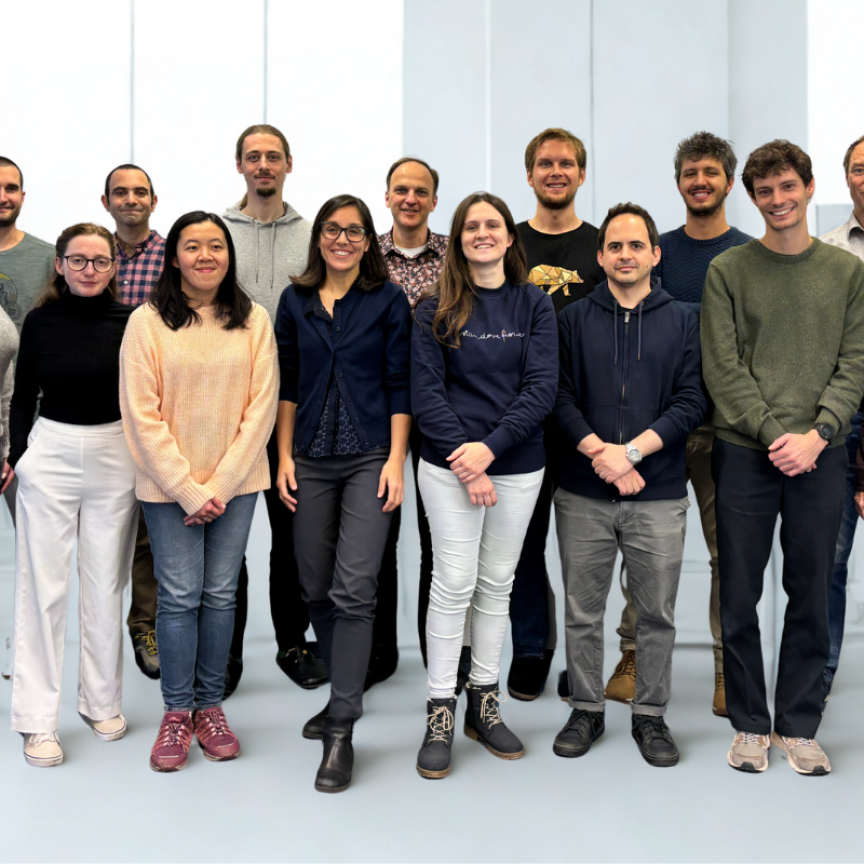New pen technology has been developed that allows users to handwrite flexible, stretchable optoelectronic devices on everyday materials including paper, textiles, rubber, plastics and 3D objects.
Developed by researchers at Washington University in St. Louis, US, the new pen technology allows anyone to make a custom light-emitting diode (LED) or photodetector without the need for specialist training or bulky equipment, the team says.
Described in Nature Photonics, the new handheld fabrication tech utilises an eco-friendly handwriting method for the quick creation of multicolour LEDs and photodetectors. Using a ballpoint pen with special inks containing conductive polymers, metal nanowires, and perovskites, users can layer the inks to make devices like disposable electronics and personalised wearables such as biomedical sensors.
The project, led by Chuan Wang, Associate Professor of Electrical and Systems Engineering at the university, builds on his earlier work on the fabrication of stretchable LEDs with an inkjet printer, conducted with doctoral candidate Junyi Zhao.

A ballpoint pen can be used to write custom LEDs on paper. The same pens can be used to draw multicolored designs on aluminum foil and to create light up sketches (bottom right). (Image: Washington University)
“Handwriting custom devices was a clear next step after the printer,” Wang said. “We had the inks already, so it was a natural transition to take the technology we had already developed and modify it to work in regular ballpoint pens where it could be cheap and accessible to all.”
The team created printable ink, but adapting it for everyday ballpoint pens needed adjustments for better handwriting on various surfaces. Zhao ensured the ink worked on porous materials like paper without smudging or mixing, important for high-performance optoelectronic devices.
“The translation from printer to ballpoint pen might look simple, but it’s actually a bit trickier than just loading ink,” Zhao said. “Our ink is specially formulated, so the pens are universal, meaning they’ll work on almost all substrates. Each single layer of the device is designed to be intrinsically elastic so it will survive deformation and can be bent, stretched and twisted without impacting device performance. For example, LEDs drawn on a glove could tolerate deformations from repeated fist grasping and releasing, and LEDs drawn on a rubber balloon could survive inflation-deflation cycles over and over."
Wang added: “Cheap, customisable LEDs open up opportunities for hands-on education, more vivid textiles like light-up clothing or greeting cards, and smart packaging. One area we’re really excited about is medical applications. Handwritten light emitters and detectors allow more patient-specific flexibility in creating wearable biomedical sensors and bandages that could have photodetectors and infrared LEDs drawn onto them for measuring pulse oximetry or to speed wound healing.”


